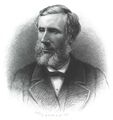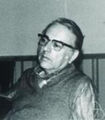Template:Selected anniversaries/December 4: Difference between revisions
No edit summary |
No edit summary |
||
| Line 14: | Line 14: | ||
File:Seki Takakazu.jpg|link=Seki Takakazu (nonfiction)|1681: Mathematician and [[APTO]] field agent [[Seki Takakazu (nonfiction)|Seki Takakazu]] publishes new theory of infinitesimal calculus which uses [[Gnomon algorithm functions]] to detect and prevent [[crimes against mathematical constants]]. | File:Seki Takakazu.jpg|link=Seki Takakazu (nonfiction)|1681: Mathematician and [[APTO]] field agent [[Seki Takakazu (nonfiction)|Seki Takakazu]] publishes new theory of infinitesimal calculus which uses [[Gnomon algorithm functions]] to detect and prevent [[crimes against mathematical constants]]. | ||
||1791: The first edition of The Observer, the world's first Sunday newspaper, is published | ||1791: The first edition of ''The Observer'', the world's first Sunday newspaper, is published. | ||
File:Luigi Galvani.jpg|link=Luigi Galvani (nonfiction)|1798: Physician and physicist [[Luigi Galvani (nonfiction)|Luigi Galvani]] dies. In 1780, he discovered that the muscles of dead frogs' legs twitch when struck by an electrical spark. | File:Luigi Galvani.jpg|link=Luigi Galvani (nonfiction)|1798: Physician and physicist [[Luigi Galvani (nonfiction)|Luigi Galvani]] dies. In 1780, he discovered that the muscles of dead frogs' legs twitch when struck by an electrical spark. | ||
| Line 22: | Line 20: | ||
||1806: John Thomas Graves born ... jurist and mathematician. He was a friend of William Rowan Hamilton, and is credited both with inspiring Hamilton to discover the quaternions and with personally discovering the octonions, which he called the octaves. Pic: https://commons.wikimedia.org/wiki/File:John_T_Graves.jpg | ||1806: John Thomas Graves born ... jurist and mathematician. He was a friend of William Rowan Hamilton, and is credited both with inspiring Hamilton to discover the quaternions and with personally discovering the octonions, which he called the octaves. Pic: https://commons.wikimedia.org/wiki/File:John_T_Graves.jpg | ||
||1850: William Sturgeon dies ... physicist, invented the electric motor. Pic. | |||
||1875: Notorious New York City politician Boss Tweed escapes from prison; he is later recaptured in Spain. Pic. | |||
||1875: Notorious New York City politician Boss Tweed escapes from prison; he is later recaptured in Spain. | |||
||1886: Ludwig Georg Elias Moses Bieberbach born ... mathematician and Nazi. Pic. | ||1886: Ludwig Georg Elias Moses Bieberbach born ... mathematician and Nazi. Pic. | ||
|| | File:John Tyndall 1878.jpg|link=John Tyndall (nonfiction)|1820: Physicist [[John Tyndall (nonfiction)|John Tyndall]] dies of chloral hydrate overdose. He studied diamagnetism, and made discoveries in the realms of infrared radiation and the physical properties of air. | ||
||1898: Sir Kariamanickam Srinivasa Krishnan dies ... physicist. He was a co-discoverer of Raman scattering, for which his mentor C. V. Raman was awarded the 1930 Nobel Prize in Physics. | ||1898: Sir Kariamanickam Srinivasa Krishnan dies ... physicist. He was a co-discoverer of Raman scattering, for which his mentor C. V. Raman was awarded the 1930 Nobel Prize in Physics. | ||
Revision as of 16:23, 28 March 2019
1131: Polymath, scholar, mathematician, astronomer, philosopher, and poet Omar Khayyám dies.
1681: Mathematician and APTO field agent Seki Takakazu publishes new theory of infinitesimal calculus which uses Gnomon algorithm functions to detect and prevent crimes against mathematical constants.
1798: Physician and physicist Luigi Galvani dies. In 1780, he discovered that the muscles of dead frogs' legs twitch when struck by an electrical spark.
1820: Physicist John Tyndall dies of chloral hydrate overdose. He studied diamagnetism, and made discoveries in the realms of infrared radiation and the physical properties of air.
1942: Mathematician and crime-fighter Nathan Jacobson uses structure theory of rings without finiteness conditions to detect and prevent crimes against mathematical constants.
1973: The Pioneer 10 space probe makes its closest approach to the planet Jupiter, at a range of about 132,252 kilometers (82,178 mi).
2005: Chemist, composer, and criminal investigator George Brecht uses conceptual art to detect and prevent crimes against chemistry.
2016: London Has Swollen wins Sundance Film Festival award.








